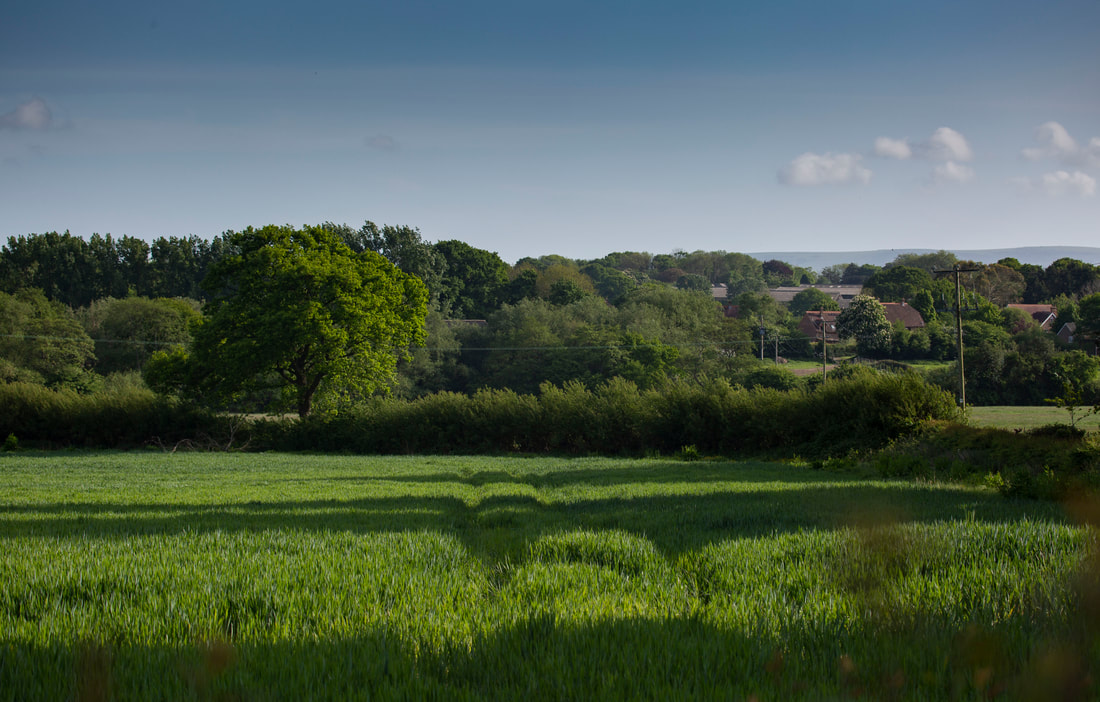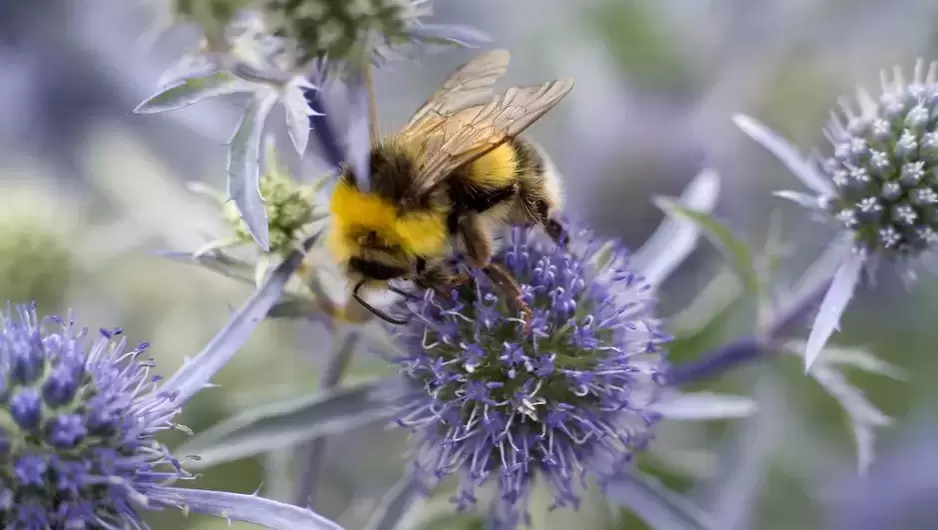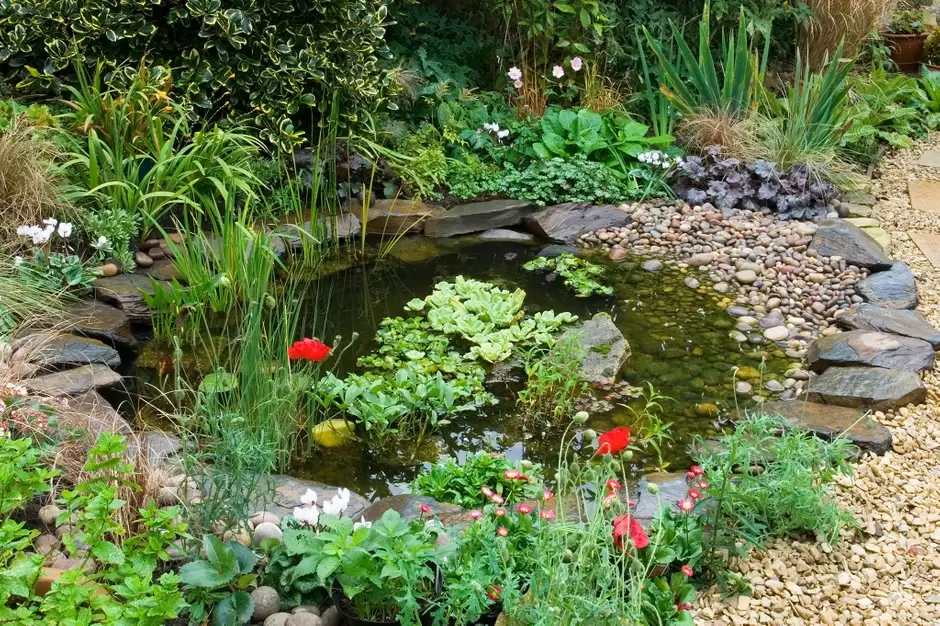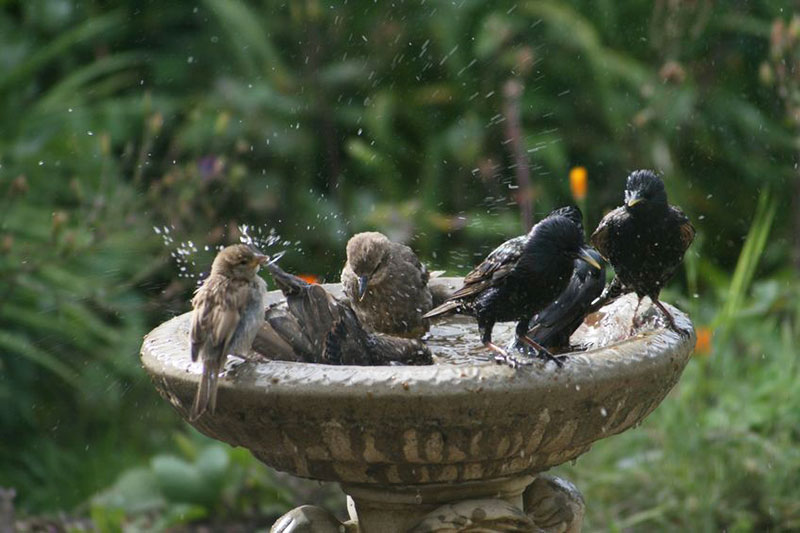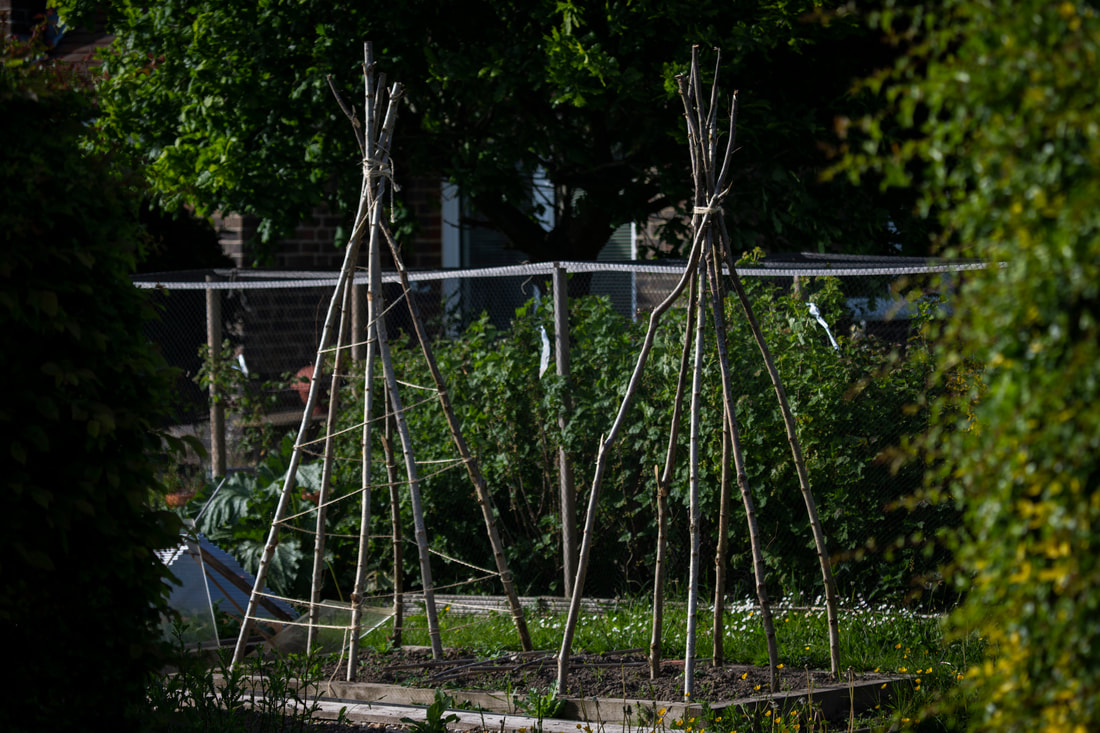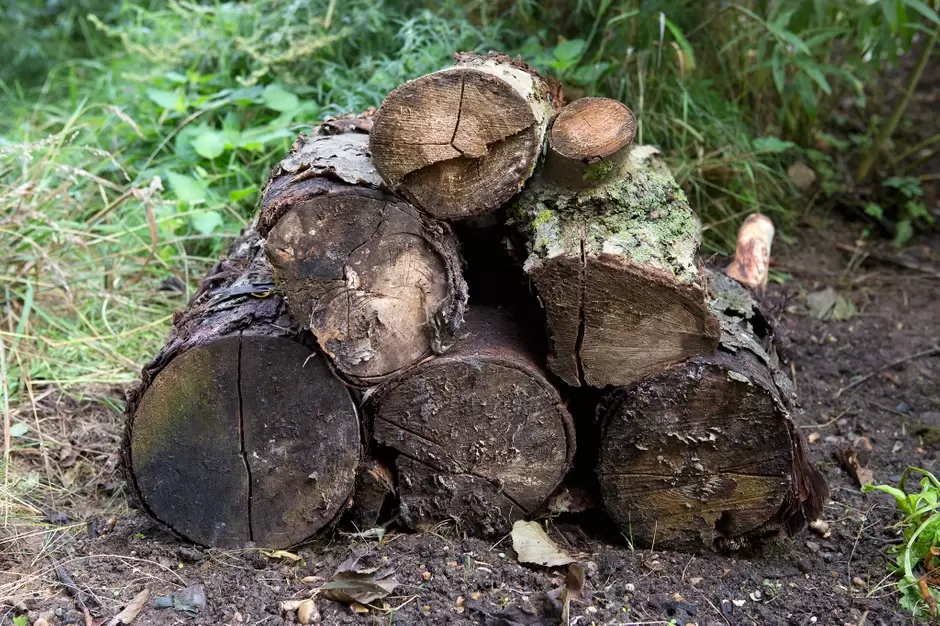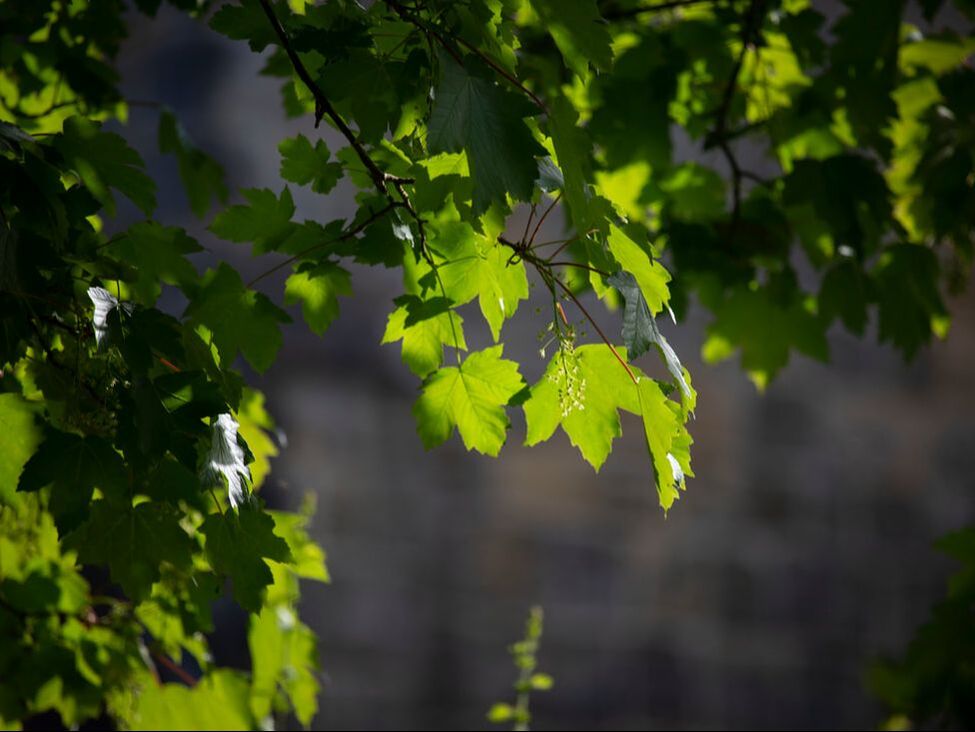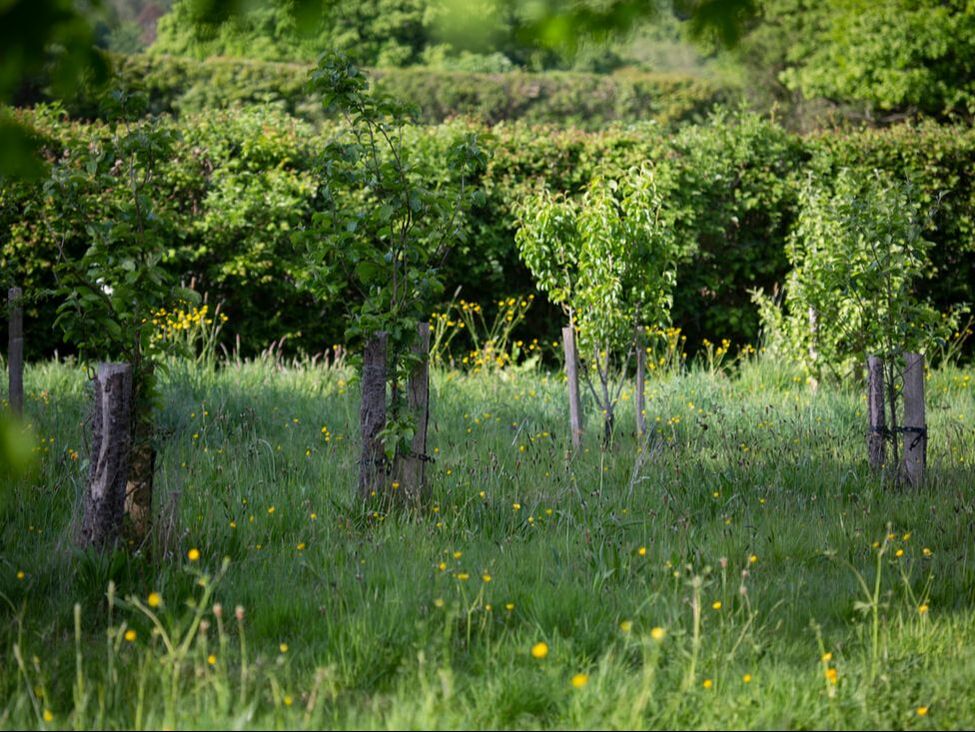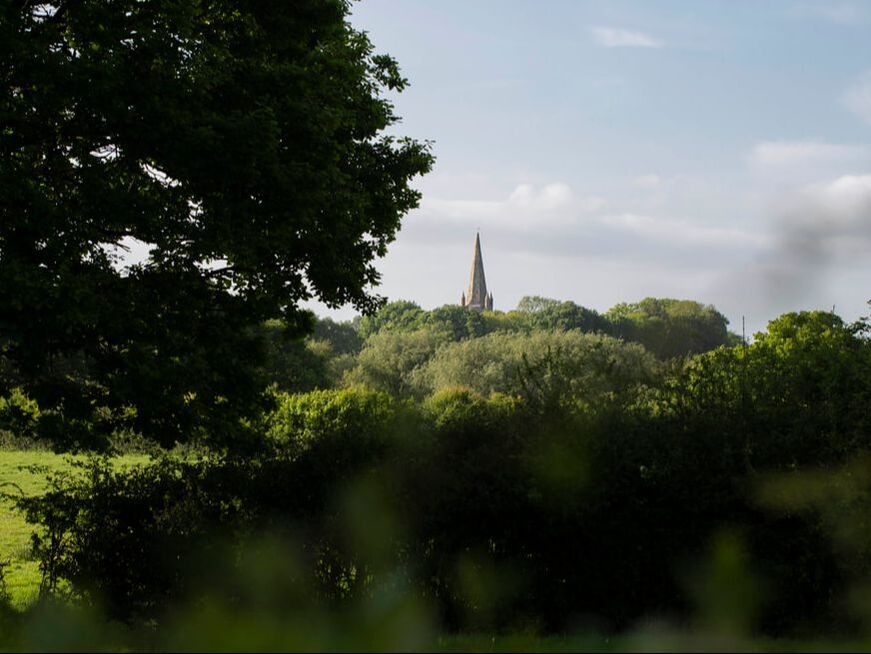On this page, we outline ways you can enhance and protect green spaces, including ways to boost biodiversity in your garden, the benefits of tree planting, and suggestions of how you can get involved locally.
Chiddingly: a nature corridor between the High Weald and South Downs
Green spaces, such as gardens, parks, woods and farmland, are vitally important in combatting climate change. They absorb carbon dioxide and are associated with lower levels of air pollution. They can reduce flood risk by absorbing surface rainwater and provide important habitats for a wide variety of insects, animals, birds and amphibians. They also offer multiple benefits to public health, with studies linking green space to reduced levels of stress.
Chiddingly Parish sits between two major areas for nature and climate resilience, the High Weald Area of Outstanding Natural Beauty (AONB) and the South Downs National Park. The Parish also sits directly on a B-Line, a 3 km wide strip linking the two areas, targetted by conservation groups as a key location for the restoration of wildflower habitats to benefit bees and other pollinators.
If all landowners, big and small, took action to restore part of their land or garden for nature, Chiddingly could form a nature recovery corridor between the Weald and the Downs. Our collective efforts could help restore natural habitats and waterways, provide pollinator corridors, and allow ecosystems to build resilience to the impacts of climate change – all whilst storing more carbon. The fantastic Weald to Waves project shows exactly what can be achieved if landowners commit to making a change for nature.
This page provides ideas about what you could do to enhance and protect the green spaces in your garden. If you are a farmer or landowner and want to know what you could do to restore and enhance nature on your land, have a look at our Restoring Nature page.
Chiddingly Parish sits between two major areas for nature and climate resilience, the High Weald Area of Outstanding Natural Beauty (AONB) and the South Downs National Park. The Parish also sits directly on a B-Line, a 3 km wide strip linking the two areas, targetted by conservation groups as a key location for the restoration of wildflower habitats to benefit bees and other pollinators.
If all landowners, big and small, took action to restore part of their land or garden for nature, Chiddingly could form a nature recovery corridor between the Weald and the Downs. Our collective efforts could help restore natural habitats and waterways, provide pollinator corridors, and allow ecosystems to build resilience to the impacts of climate change – all whilst storing more carbon. The fantastic Weald to Waves project shows exactly what can be achieved if landowners commit to making a change for nature.
This page provides ideas about what you could do to enhance and protect the green spaces in your garden. If you are a farmer or landowner and want to know what you could do to restore and enhance nature on your land, have a look at our Restoring Nature page.
Boosting biodiversity
What do we mean by biodiversity? Put simply, the biodiversity of a place means the range of species – animals, plants, fungi, and even microorganisms like bacteria – that are present. Organisms work together in ecosystems, like an intricate web, to maintain balance and support life. More biodiverse ecosystems tend to be more resilient to climate change, meaning they can resist and recover from extreme events more quickly.
Biodiversity in Sussex has been slowly reducing over time, as a result of landuse changes, climate change, farming practices and the way we plant and maintain our gardens. However, there are ways to reverse some of this change. Wildlife rarely respects garden and field boundaries, so try to think of your land or garden as part of a wider network of interlinked gardens and green spaces – any changes you can make will benefit this wider web.
Biodiversity in Sussex has been slowly reducing over time, as a result of landuse changes, climate change, farming practices and the way we plant and maintain our gardens. However, there are ways to reverse some of this change. Wildlife rarely respects garden and field boundaries, so try to think of your land or garden as part of a wider network of interlinked gardens and green spaces – any changes you can make will benefit this wider web.
Boosting biodiversity in your garden
Private gardens cover about 270,000 ha (667,000 acres) in the UK, and provide food, shelter and breeding sites for a range of animals and insects. Attracting more wildlife will increase both the interest and enjoyment of your garden. As the Royal Horticultural Society (RHS) website shows, it is relatively easy to encourage wildlife into your garden without compromising the way it looks. Small changes can bring major benefits for biodiversity – and some will save you time and money.
Choose the right flowers – Flowers provide pollen and nectar for pollinators such as bees, butterflies and other beneficial insects. Choose plants that provide pollen and nectar for as long a season as possible. The RHS has a number of resources to help you find the right plants for pollinators, including a handy list of year-round plants to get your garden buzzing. Remember, most beneficial insects do not have the specialised mouthparts needed for accessing nectar from deep or tubular flowers. Instead, they need tiny flowers with shallow, exposed nectaries. If you only have limited space, you could set up a corner of your garden as a small but perfectly formed nectar cafe.
Choose the right flowers – Flowers provide pollen and nectar for pollinators such as bees, butterflies and other beneficial insects. Choose plants that provide pollen and nectar for as long a season as possible. The RHS has a number of resources to help you find the right plants for pollinators, including a handy list of year-round plants to get your garden buzzing. Remember, most beneficial insects do not have the specialised mouthparts needed for accessing nectar from deep or tubular flowers. Instead, they need tiny flowers with shallow, exposed nectaries. If you only have limited space, you could set up a corner of your garden as a small but perfectly formed nectar cafe.
|
Tips for setting up a Nectar Cafe
|
Establish a wildflower meadow – If you have the space, you could establish a wildflower meadow. Don’t forget to plant a mix of native Wealden species. Companies such as British Wildflower Seeds sell ready-mixed seed blends, or you could make your own seed bombs.
Grow a mix of trees and shrubs – Grow a range of trees, shrubs and climbers, or a mixed hedge, to provide food and shelter. Small trees and shrubs that are good for blossom and berries include rowan, crab apple, elder, blackthorn and hawthorn.
Add water for mammals and insects – The easiest way to add wildlife value to a garden is to install a pond. This needn’t be substantive – a large pot in an out-of-the-way spot will do. Avoid introducing fish to a wildlife pond, and make sure your pond has one sloping side to allow creatures an easy access route.
Provide food and water for birds all year – Garden birds are some of the most obvious garden wildlife, and easy to attract with supplementary feeding. Don’t forget that birds need clean water too.
Grow a mix of trees and shrubs – Grow a range of trees, shrubs and climbers, or a mixed hedge, to provide food and shelter. Small trees and shrubs that are good for blossom and berries include rowan, crab apple, elder, blackthorn and hawthorn.
Add water for mammals and insects – The easiest way to add wildlife value to a garden is to install a pond. This needn’t be substantive – a large pot in an out-of-the-way spot will do. Avoid introducing fish to a wildlife pond, and make sure your pond has one sloping side to allow creatures an easy access route.
Provide food and water for birds all year – Garden birds are some of the most obvious garden wildlife, and easy to attract with supplementary feeding. Don’t forget that birds need clean water too.
Leave a pile of dead wood – Decaying wood provides habitats for rare and specialist insects such as stag and bark beetles. It also provides cover and hibernation sites. Any unstained or unpainted wood is fine, although big, natural logs are best. If you are feeling ambitious, you could even build a bug hotel or mansion.
Don’t be too tidy – If you don't have space for, or don't want, a full-scale wildflower meadow, simply allowing patches of lawn to grow longer will provide shelter for small mammals and food for some butterfly caterpillars. Piles of leaves and twiggy debris provide food and habitat for many species. If you leave perennials uncut over winter, their hollow stems can shelter hibernating insects. Taking part in schemes such as No Mow May is great for letting wild plants thrive at the time of year when pollinators need them most.
Garden sustainably – Minimise your use of synthetic pesticides, avoid peat-based composts, choose sustainably-sourced wood for garden furniture, recycle and compost all you can, and save water wherever possible – this will ensure your garden not only boosts biodiversity but has a lower carbon footprint.
Don’t be too tidy – If you don't have space for, or don't want, a full-scale wildflower meadow, simply allowing patches of lawn to grow longer will provide shelter for small mammals and food for some butterfly caterpillars. Piles of leaves and twiggy debris provide food and habitat for many species. If you leave perennials uncut over winter, their hollow stems can shelter hibernating insects. Taking part in schemes such as No Mow May is great for letting wild plants thrive at the time of year when pollinators need them most.
Garden sustainably – Minimise your use of synthetic pesticides, avoid peat-based composts, choose sustainably-sourced wood for garden furniture, recycle and compost all you can, and save water wherever possible – this will ensure your garden not only boosts biodiversity but has a lower carbon footprint.
The benefits of tree-planting
Trees are essential for biodiversity. Woodlands are home to a range of wildlife, from shade-loving plants and nesting birds, to fungi and rare insects. Individual trees provide food, protection and nesting sites. The benefits of trees in tackling climate change are also well established. As they photosynthesise and grow, trees absorb atmospheric carbon and lock it up for centuries. They also reduce air pollution and, by intercepting rainfall and drawing up moisture from the soil, reduce the risk of flooding. In addition, trees support people, and can help wildlife and livestock in adapting to climate change.
If you have the space in your garden or on your land, one of the best things you can do is plant a tree – or better still, plant multiple trees (ideally at the edge of existing woodland). However, don’t just plant any old tree.
Think carefully about what trees will grow well on your site – Most trees can grow in a range of conditions, though some prefer particular soil types. Take a look around the village to see what’s thriving for an idea of what might do well. The Woodland Trust have a guide to help you decide where to plant – whether it’s a single tree or a larger planting project.
Choose a native British species – Native British trees colonised the UK at the end of the last Ice Age, before the British and Irish Isles were cut off from the European mainland by rising post-glacial sea levels. The Woodland Trust has a useful list of British native trees so that you can choose an appropriate species.
Buy UK-sourced and grown trees – This is the best way to ensure that your tree is suited to local climatic conditions, and to prevent the spread of imported pests and diseases.
If you’re planting lots of trees – Think carefully about using a mix of native species. Sussex woods are under pressure from pollution, climate change, pests and diseases. Planting a range of native tree species will make your mini-woodland more resilient to these pressures. If you are thinking about planting 500+ trees on at least half a hectare, have a look at the MOREwoods scheme for saplings, advice and funding support.
If you have the space in your garden or on your land, one of the best things you can do is plant a tree – or better still, plant multiple trees (ideally at the edge of existing woodland). However, don’t just plant any old tree.
Think carefully about what trees will grow well on your site – Most trees can grow in a range of conditions, though some prefer particular soil types. Take a look around the village to see what’s thriving for an idea of what might do well. The Woodland Trust have a guide to help you decide where to plant – whether it’s a single tree or a larger planting project.
Choose a native British species – Native British trees colonised the UK at the end of the last Ice Age, before the British and Irish Isles were cut off from the European mainland by rising post-glacial sea levels. The Woodland Trust has a useful list of British native trees so that you can choose an appropriate species.
Buy UK-sourced and grown trees – This is the best way to ensure that your tree is suited to local climatic conditions, and to prevent the spread of imported pests and diseases.
If you’re planting lots of trees – Think carefully about using a mix of native species. Sussex woods are under pressure from pollution, climate change, pests and diseases. Planting a range of native tree species will make your mini-woodland more resilient to these pressures. If you are thinking about planting 500+ trees on at least half a hectare, have a look at the MOREwoods scheme for saplings, advice and funding support.
Get involved locally
If you only have a small garden but want to get involved in local action to protect and enhance green spaces, then it is well worth signing up as a volunteer with an organisation like the Sussex Wildlife Trust. Volunteering is a chance to make a positive contribution to improving your local area, learn new skills, make new friends and share or increase your knowledge of nature conservation.
The Sussex Wildlife Trust offers opportunities to volunteer on nature reserves and in community greenspaces, and for adults to volunteer with young people. If you aren’t physically able to get out into the environment, then there are ways to volunteer with the Trust’s operations, fund-raising and marketing, and membership teams. For full details, have a look at the Trust’s volunteering page.
The High Weald website has an extensive list of other organisations that you could volunteer with, including everything from butterfly and bird conservation to archaeology groups.
The Sussex Wildlife Trust offers opportunities to volunteer on nature reserves and in community greenspaces, and for adults to volunteer with young people. If you aren’t physically able to get out into the environment, then there are ways to volunteer with the Trust’s operations, fund-raising and marketing, and membership teams. For full details, have a look at the Trust’s volunteering page.
The High Weald website has an extensive list of other organisations that you could volunteer with, including everything from butterfly and bird conservation to archaeology groups.

